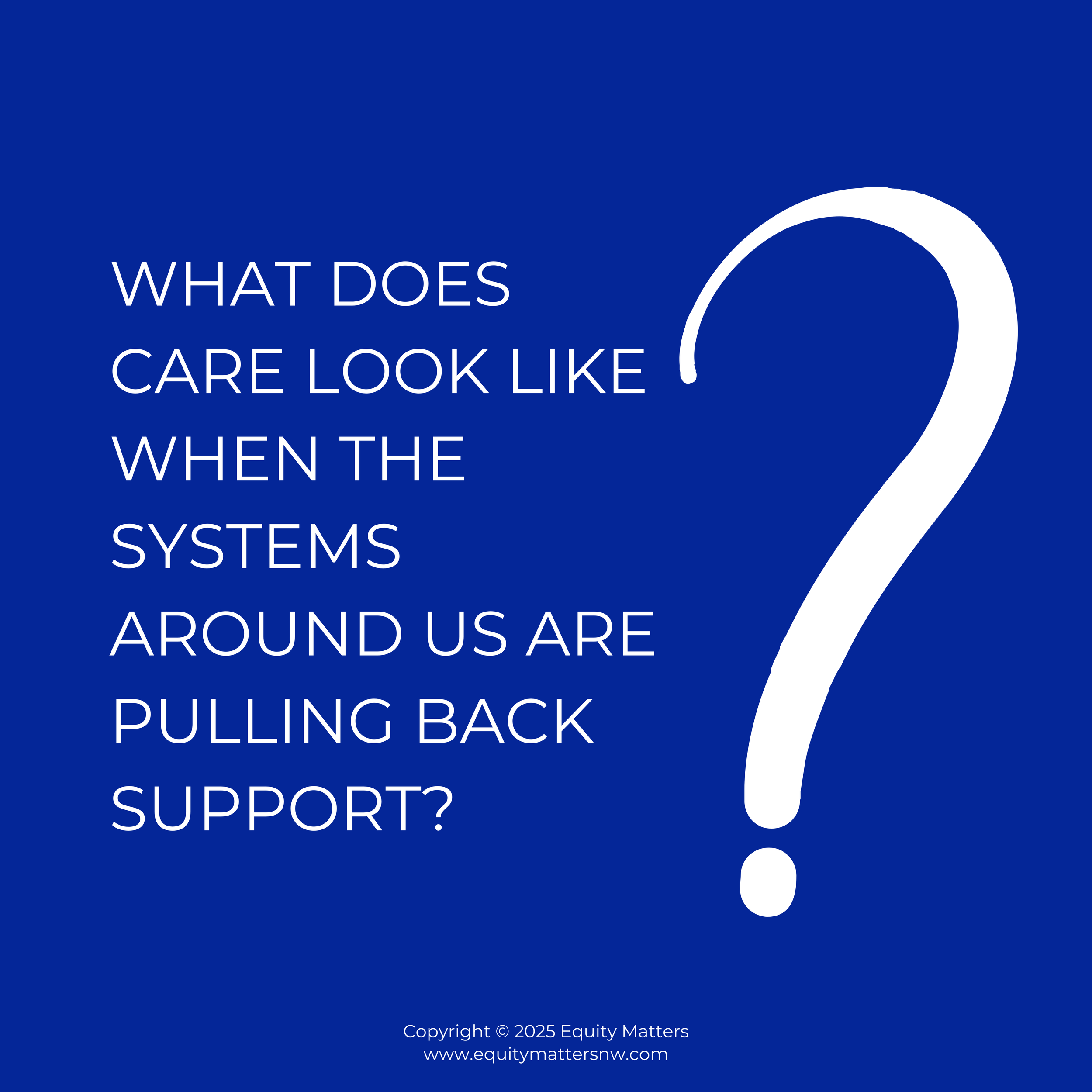What Does Care Look Like When the Systems Around Us Are Pulling Back Support?
Our blog is a space to explore the hard questions that move organizations toward real change. Grounded in the belief that racial equity must live in both culture and daily practice, we share stories, tools, and reflections that help bridge values with action. From internal leadership shifts to community-rooted strategies, we highlight the everyday work of building racial equity, one decision, one relationship, one breakthrough at a time.
November's blogging prompt comes from CiKeithia.
When systems withhold food, pay, or justice, our communities remember what to give. For many, these systems have never fully cared for us, and so we built our own. From mutual aid to shared meals, from collective organizing to everyday acts of care, we’ve always found ways to sustain one another. The lineages of care we come from teach us to navigate scarcity with creativity, to practice generosity not as charity, but as a means of survival. This month, we trace those threads of care that have always carried equity work forward, even when the world seemed to say “not yet.”
Coming soon.
Honestly, I didn’t think things could get harder, but they continue to get harder. Food benefits are being cut. Wages don’t stretch far enough. Institutions respond with policies and plans, but not always with care. What would it look like for organizations to become true caretakers, not just rule makers or employers, but communities that hold people when times are uncertain?
I didn’t grow up culturally Korean, but living in Korea after college opened my eyes to something I didn’t yet have language for. At the time, I was too young and too “independent” to recognize it. I found the constant checking in and concern a little overbearing. But later, while living in Mongolia, I began to understand. The small Korean community there reached out with a kind of care I hadn’t realized I was missing, care rooted in relationship, not policy. It made me see that every culture carries its own lineage of care, and we can choose to carry that forward in our work.
Three Korean practices have stayed with me and continue to shape my perspective on organizational care.
정 Jeong – Emotional Care
Jeong is the unspoken current that binds people together. It is the long-term care that remains steady, even when you haven’t spoken in years. In organizations, it shows up when we hold space for honesty, tend to conflict with care, and remember that relationships, not tasks, are what sustain the work.
계 Gye – Economic Care
Gye began as a women-led savings circle for those excluded from formal systems. Its lesson is that economics can be an act of trust. Organizations carry gye when they practice transparency, share resources, and treat financial care as a form of justice, not generosity.
우리 Uri – Belonging Care
Uri means “we.” In English, we might say “my mom,” but in Korean, we say “our mom.” That simple shift reflects a worldview of interdependence. Within organizations, uri means replacing “those people” with “our community,” building belonging as a shared responsibility rather than a side initiative.
Care has always been relational, carried by people who knew systems would not save them. This month, I invite us to remember those lineages, to ask how we can build care into our everyday work. Not as charity or reaction, but as part of who we are together.
If our equity tools, blog posts, or shared resources have added value to your work, consider leaving a contribution. Your support powers this work and fuels the creation of more racial justice-focused tools.

